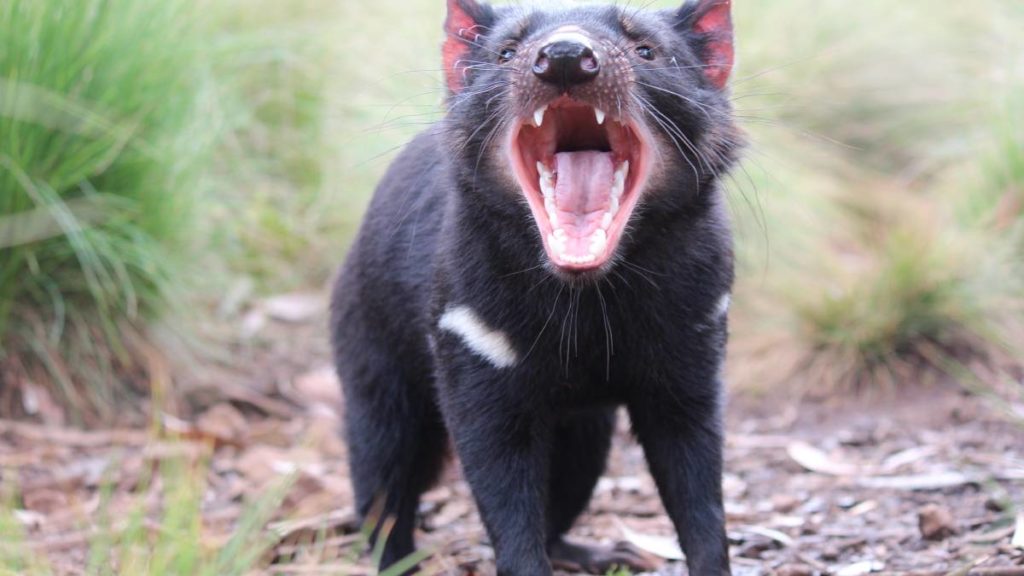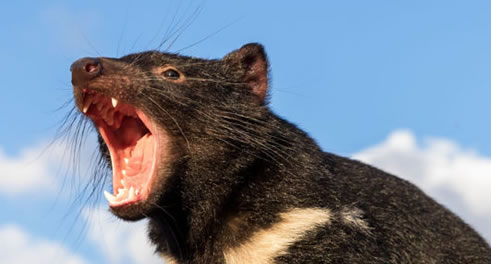Scientists hope the scrappy predators’ reintroduction can balance ecosystems ravaged by invasive species.
Tasmanian devils, known for their ferocious temperaments, have been plagued by a contagious facial cancer in recent decades.
It’s been 3,000 years since the Tasmanian devil’s raspy shriek rang through the forests of mainland Australia. But now, thanks to a dogged reintroduction effort, 26 of these endangered tiny terrors have returned.
Written content by Jason Bittel | National Geographic
No bigger than a lapdog, these marsupials are famous for their ferocity and powerful jaws, which can reduce large carcasses to smithereens in minutes. But in the 1990s, the species was hit with a contagious and deadly mouth cancer, causing its only remaining wild population, on the Australian island state of Tasmania, to drop to just 25,000 animals.
It’s unknown why the species disappeared from Australia millennia ago, but it’s likely due to human actions—when early hunters killed off most of the continent’s megafauna, the devils had nothing left to eat.

As scavengers, devils play a crucial role in maintaining a balanced, healthy ecosystem—which is why scientists have been trying so hard to bring them back.

“We’ve worked for over a decade to get to this point,” says Tim Faulkner, president of AussieArk, a species recovery organization. The group collaborates closely with the nonprofits Global Wildlife Conservation and WildArk to orchestrate the release of captive-raised animals into a thousand-acre fenced area called Barrington Wildlife Sanctuary, just north of Barrington Tops National Park in eastern Australia.
Despite their fearsome reputation, “they’re no threat to humans or agriculture,” he adds.
Even still, reintroducing animals is uncertain business, so the scientists did a soft launch of 15 devils in March of this year. The team used radio-collars to check in on the released devils, as well as put out kangaroo carcasses for food as the animals adjusted to their new home. After all of the devils showed signs of thriving, the scientists felt optimistic enough to release another 11 individuals on September 10—and now they beasts are mostly on their own. Read more from National Geographic
Read other environmental and animal-related stories from News Without Politics





